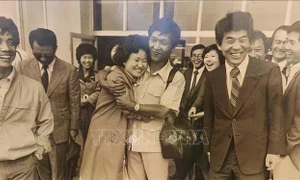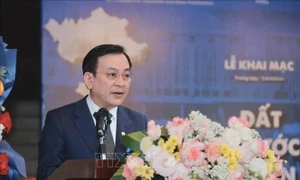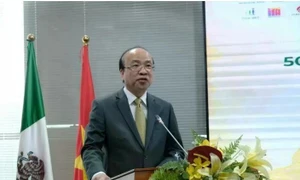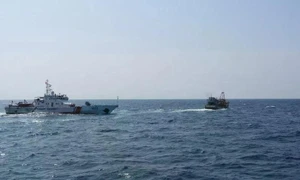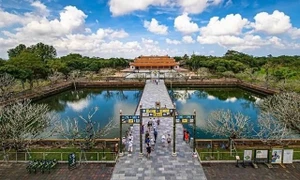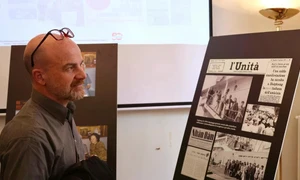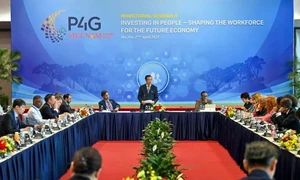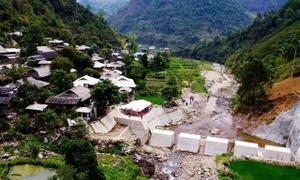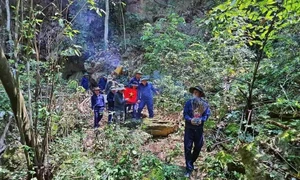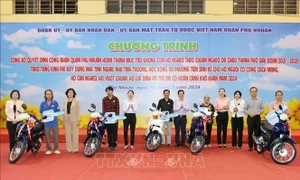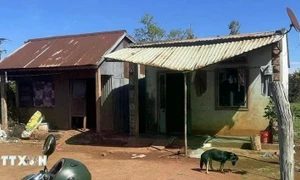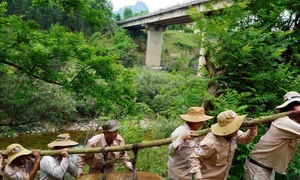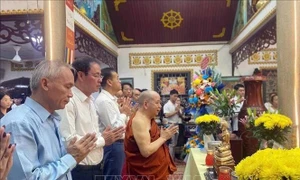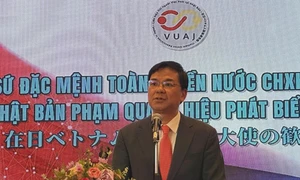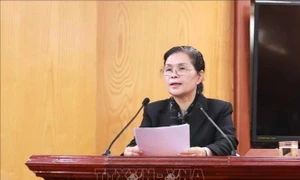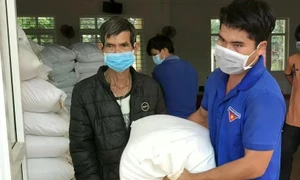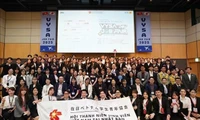During the historic 1975 Spring General Offensive and Uprising, correspondents from “Việt Nam Thông tấn xã” (Vietnam News Agency – VNA) and “Thông tấn xã Giải phóng” (Liberation Press Agency – LPA) were present across every frontline, promptly reporting news and images from the liberated regions, whether under fire or on the move – from the Central Highlands and Central Vietnam to the Southeast and Mekong Delta.
These information warriors, fuelled by an unwavering spirit and belief in victory, closely followed liberation forces all the way to Saigon (now Ho Chi Minh City) in the final battle.
Where victory came, news immediately spread
Following a major reinforcement mission in March 1973, the VNA continued to send teams of technicians and telegraphers to support the LPA through late 1973 and into early 1975. During this period, it considered supporting the South not only a vital duty but a sacred responsibility.
In March 1975, journalist Tran Mai Huong, then a university student and later General Director of the VNA — volunteered to join the VNA frontline reporting team in the Tri Thien battlefield. What began as a regional mission turned into a journey across the entire country, culminating at noon on April 30, 1975, at the Independence Palace in Saigon.
He recounted a memorable moment – after a night of marching from Quang Tri to Hue, he sat on the steps of the Phu Van Lau Pavilion at around 10am and quickly penned the article “Hue co do bay” (red flags flying over Hue). Written in just 45 minutes, the article was dispatched immediately via courier to the radio outpost in Quang Tri. Huong also wrote the first article on the liberation of Da Nang, which marked a key milestone in the final approach to victory.
Elsewhere, as the Central Highlands and Southeastern fronts were liberated, journalist Hoang Dinh Chien was stationed with the Propaganda Office of the Region Command, producing daily updates and commentary from the battlefield. He recalled being tasked with writing a piece entitled “A Patriotic and Timely Act” after an anti-war pilot of the puppet regime bombed the Independence Palace before safely landing in a liberated zone. His effort earned him a pack of Thang Long cigarettes from Lieutenant Colonel Ngo The Ky, who praised, “Excellent work!”
From early April 1975, the situation at the LPA’s “R” base in Tay Ninh had grown increasingly urgent. On April 6, journalist Tran Thanh Xuan, Director of the LPA, formed the first team of reporters to head into Saigon. The team included veteran journalist Nguyen Thanh Ben and four others. Their mission was to gather real-time reports and photographs, capturing the momentum and morale of the advancing forces.
Journalist Ben reflected, “Wherever we marched, reporters would quickly jot notes and snap photos. Each moment was precious—many never to come again. Often, even before soldiers returned from battle, our stories were already being broadcast, lifting spirits across the country.”
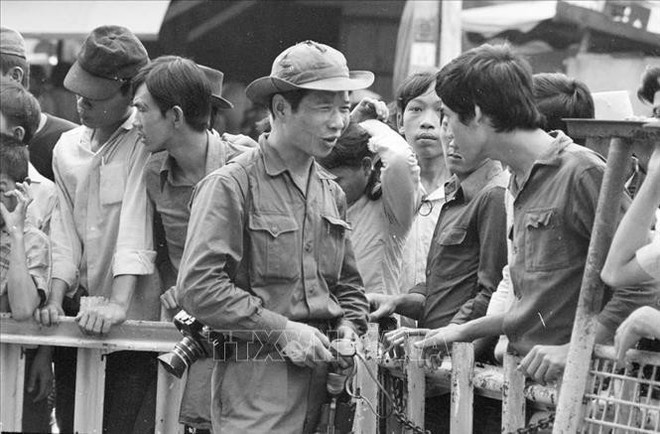
With the motto “The signal must never go silent”, the LPA and VNA reporters maintained full operations – whether under fire or on the move – ensuring a uninterrupted flow of communication and information.
Standing side by side with advancing troops
In preparation for the historic Ho Chi Minh Campaign, the LPA deployed its reporting teams alongside military prongs. Equipped with essential personnel and gear, these journalists were embedded with frontline units, sharing in both hardship and triumph. They together advanced to the final battle, which liberated Saigon and the whole southern region and ultimately enabled national reunification.
Some teams followed the military prongs advancing to liberate Saigon and southern provinces, capturing stories from key battles as the troops surrounded Saigon. Among them was a team including journalist Bui Thanh Liem and photographer Nong Quang Khanh, who were assigned to Corps 232 of the West - Southwest front under the command of Senior Lieutenant General Nguyen Minh Chau.
Liem recalled the gruelling journey through the wetlands of the Mekong Delta 50 years ago, often carrying heavy radio equipment across difficult terrain. On April 28, his team reached the Vam Co Dong River. The targets of Corps 232 were not to attack the Independence Palace but to destroy the National Police Headquarters and the Phu Lam Communications Centre of the Republic of Vietnam. This military wing later pivoted to secure the Mekong Delta and cut off retreat routes of enemy forces.
Another key group, codenamed H3, comprised editors, reporters, technicians, and telegraphers tasked with accompanying a large delegation of the Southern Vietnam Party Committee's information and education board to prepare for the takeover of Saigon. Each reporter was given a marked map of the city to guide them to strategic locations, especially the Independence Palace.
On April 2, 1975, a team led by Editor-in-Chief Dao Tung, including journalists Van Bao, Lam Thanh, Pham Vy, Tran Mai Hanh, Nguyen Huu Chi, radio engineer Pham Loc, and telegraph operator Cao Xuan Tam, entered the battlefield to coordinate with the LPA for post-liberation coverage.
On April 7, another group led by journalist Nguyen Thanh Ben departed from Xa Mat - Tay Ninh for the liberated area of Thanh An in Binh Duong. To avoid detection, they travelled by night and hid in forests, gardens, and tobacco fields during the day. Upon reaching Cu Chi – known as the “Land of Steel” – they saw first-hand the devastation and resilience of war-torn communities.
By mid-April, waves of victory were being reported from every direction. As the enemy’s defences crumbled, liberated zones expanded and the advancing troops drew closer to Saigon. Journalist Nguyen Thanh Ben recalled, “After April 18, as we neared the city, enemy resistance stiffened. We changed tactics—marching by night and hiding by day - to protect the team and stay close to the army.”
On April 29, LPA Director Tran Thanh Xuan led a rapid deployment of reporters and technicians from the "R" base in Tay Ninh to Saigon, determined to witness and document the fall of the Saigon regime.
On the morning of April 30, 1975, the forward team of the VNA – including Vu Tao, Dinh Quang Thanh, Hua Kiem, Tran Mai Huong, Ngoc Dan, Hoang Thiem, driver Ngo Binh, and telegraph operator Le Thai – entered the city with Corps 2. Crossing the Dai Han Highway Bridge, they arrived at the Independence Palace, just as the curtain fell on a divided Vietnam./.

